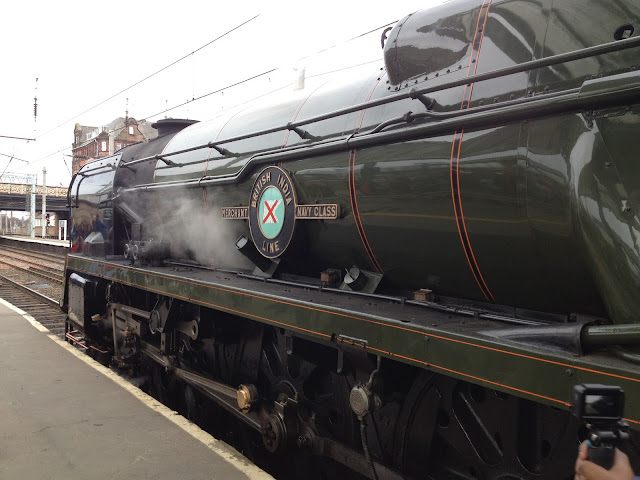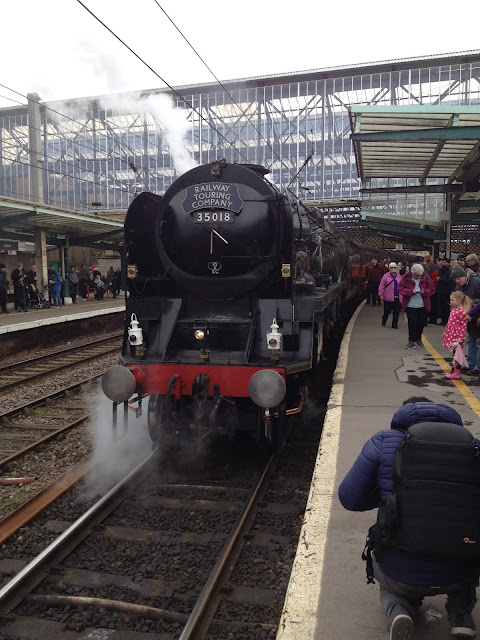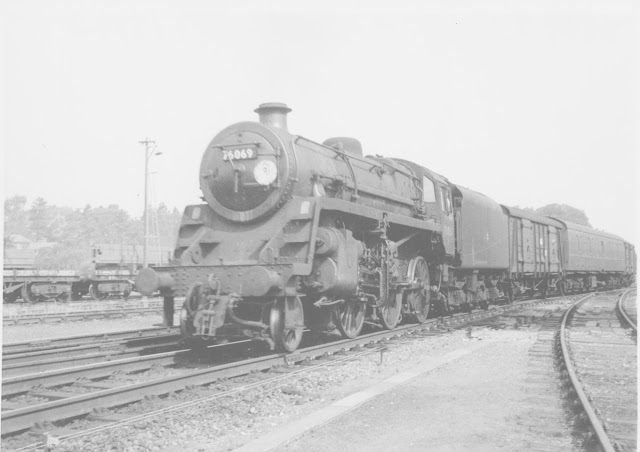Tuesday, 30 June 2020
Ivatt LMS Class 4 2-6-0s
Friday, 26 June 2020
Letter from America
Saturday, 20 June 2020
Wallasey Grove Road
Thursday, 18 June 2020
In need of a banker
Monday, 15 June 2020
Crabs
These ex-LMS 2-6-0s designed by Hughes were rather ungainly in appearance but gained greater affection as they stuck it out in the north west during the decline of steam on BR. John Dyer photographed these examples at Birkenhead and Bidston sheds and on a freight through Chester General. The photos were taken between 1960 and 1964.
Saturday, 13 June 2020
Seaside Specials
Monday, 8 June 2020
The Merchant Navy Class
When I was 3 or 4 years old, my Dad took me to London for
the day. We were staying with my uncle in Winchester at the time. On that day,
I know that I would have seen un-rebuilt Merchant Navy Class locomotives and
probably quite a few of them. By the time I was old enough to show a more
perceptive interest, however, they had all been rebuilt into their final form.
From the pictures, their rebuilt form was preferable. They
wore their air-smoothed casing less comfortably than the light Pacifics and the
nameplate looked to me as though it was set too low. The rebuilt version is to
my mind one of the most pleasing designs of all the main line express passenger
engines. Everything appears to be perfectly harmonious and in balance.
I got to see all thirty, eventually, even though I had to
count my last one, No. 35020 Bibby Line, when her boiler had already been
separated from her frames during the scrapping process at Eastleigh works in
the summer of 1965. It was not a very satisfying way to wrap up such a
distinguished class, but I’m gradually getting over my disappointment at being
a few months too late to see her all in one piece.
John Dyer’s picture shows No 35028 Clan Line preparing to
take a relief to the Bournemouth Belle out of Southampton Central in August 1961.
Last year’s photos are of No 35018 British India Line on the Winter Cumbrian
Mountain Express at Carlisle.
Friday, 5 June 2020
BB/WC
Battle of Britain and West Country Classes were the same -
except for the names, of course. There were much more obvious differences
between un-rebuilt and rebuilt versions of both, though. Spam cans were very
distinctive and therefore quite exotic beasts, especially for those of us in
the north west of England. It seemed that we were far away from their home
territory, at the time. I saw most of them eventually but eight managed to
evade me before the end of steam on the Southern Region in 1967.
John Dyer photographed BB Class No. 34065 Hurricane at
Exeter St David’s in 1960 at the head of the up Atlantic Coast Express. BB
Class No. 34090 Sir Eustace Missenden Southern Railway and No. 34038 Lynton
were both Waterloo-bound with expresses that had stopped at Winchester City
during August 1965.
































